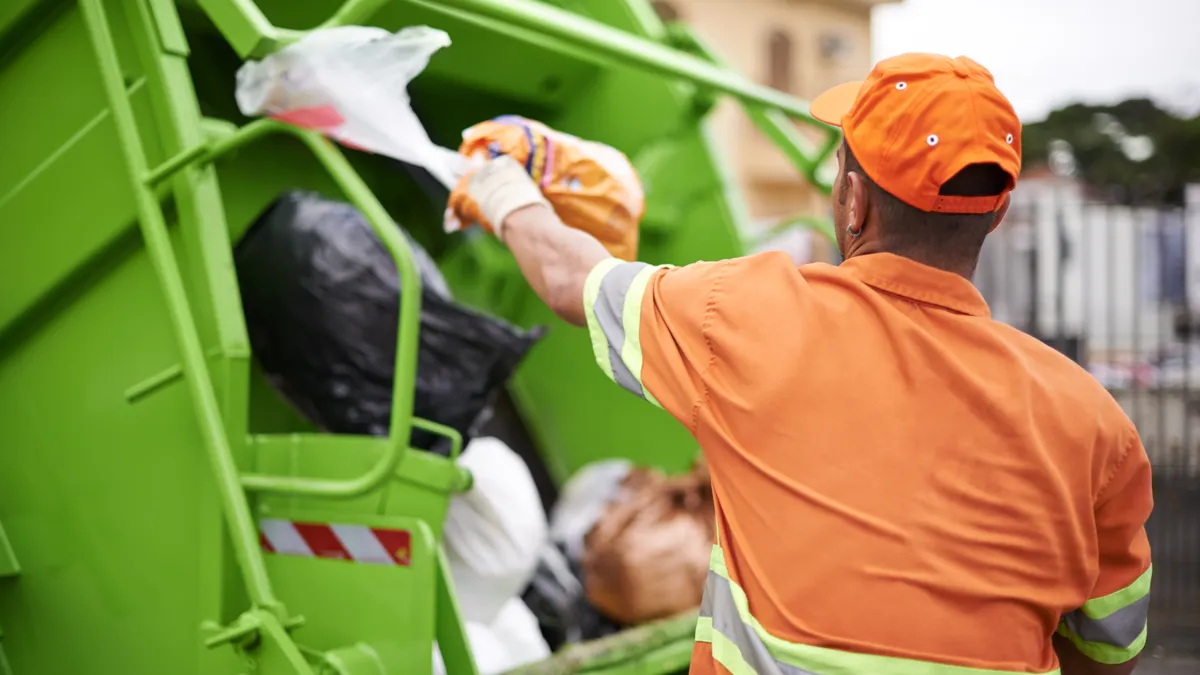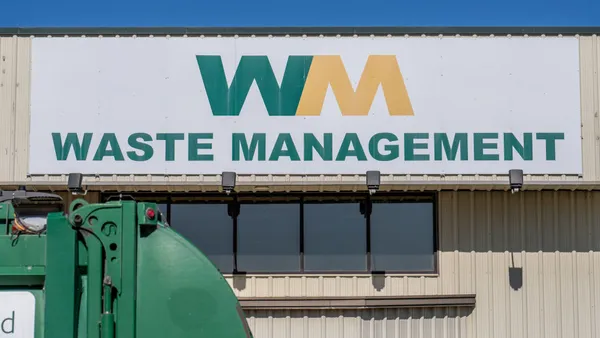Dive Brief:
- The rate of fatalities among “refuse and recyclable material collectors” decreased in 2021, according to newly released data from the U.S. Department of Labor’s Bureau of Labor Statistics. Collection moved down the list of deadliest jobs in the U.S. from sixth place to seventh.
- For every 100,000 full-time collection workers, there were 27.9 fatal work injuries, compared with 33.1 in 2020. In the solid waste collection industry, there were 34 fatal occupational injuries in 2021, 21 of which were linked to transportation incidents. The overall number of fatalities was down from 38 in 2020 and 43 in 2019.
- No fatalities at landfills were recorded in 2021; four fatalities at MRFs were recorded, consistent with the level the prior year.
Dive Insight:
The 2021 fatality data follows promising signs last month, when BLS revealed that incidents of work-related injuries and illness in the waste industry in 2021 reached their lowest levels in years. According to analysis shared by Solid Waste Association of North America, the injury and illness rates for workers on collection routes, in MRFs and at landfill sites were all at their lowest since at least 2006.
The apparent improvement in waste collectors’ safety came as, across all U.S. industry sectors, BLS recorded the highest annual rate of fatal occupational injury since 2016. That overall U.S. incident rate in 2021 rose 8.9% from 2020.
Getting off the top 10 list of most dangerous jobs is a critical industry goal, SWANA emphasized at last week’s WASTECON and outlined in its latest strategic plan.

“We've made a lot of improvements over the past several decades, but we're still in the top 10 list,” said Jesse Maxwell, advocacy and safety senior manager at SWANA, during a panel discussion at WASTECON’s Safety Summit, which was held prior to the release of the BLS fatality data. “We've certainly been working on this issue for a while, but we're putting it as goal No. 1.”
"One of the most challenging things, and perhaps most interesting things, about doing solid waste industry safety is that it's such a dynamic environment, and every site is different,” Maxwell said.
Maxwell noted the need for continued focus on injuries and deaths from truck-related incidents, specifically when drivers are struck by their own vehicles or when a truck is backing up. Transportation incidents were responsible for the majority of solid waste collection industry deaths in 2021.
Going forward, environmental conditions around changing or dangerous temperatures will continue to be top of mind. “The biggest [issue] at the forefront and that's affecting the industry is heat," said Kirk Sander, the National Waste & Recycling Association’s chief of staff and vice president of safety and standards, during the WASTECON panel. The U.S. Occupational Safety and Health Administration is developing a workplace heat standard.
WASTECON’s Safety Summit also highlighted continued risks from lithium-ion batteries in the waste stream and the role that employers can play in bettering the industry’s safety record with more thorough and up-to-date job hazard analysis and injury and illness prevention programs.
“Although we are pleased by the industry’s improvement last year, being the seventh deadliest occupation in the United States is nothing to brag about,” said SWANA CEO David Biderman in a press release following the BLS data release Friday. SWANA also said that data the association has tracked in 2022 “is unfortunately showing a return to higher levels of worker fatalities, suggesting that the drop in 2021 might be an aberration due to the pandemic.” SWANA plans to issue a report on 2022 industry fatalities in early 2023.
NWRA CEO Darrell Smith also addressed the 2021 figures. “Today is an indication that our safety message is working and we commend our members for making safety a priority. We know we still have a long way to go to bring home every worker every day. Progress like this couldn’t be made without our member companies working together for one goal,” Smith stated in a NWRA press release Friday.
Waste Dive Reporter Megan Quinn contributed to this story.
This story has been updated with additional details from SWANA and NWRA.











